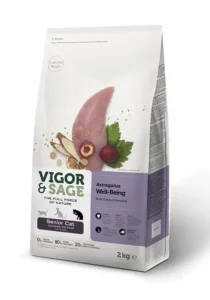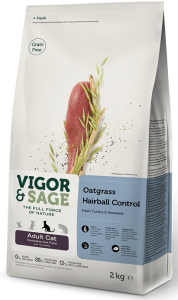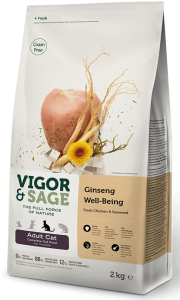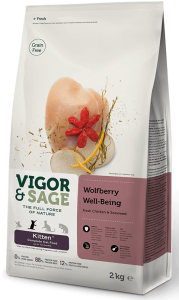Vigor and Sage
Oatgrass Hairball Control Large Breeds Adult
Adult
Hairball
Indoor and Outdoor
Click to reveal the score breakdown
Tap to view ingredients, guaranteed analysis and more
Ingredients
Fresh boneless chicken meat
26%
Dried chicken
25%
Dried peas
Dried potato
Dried beet pulp (desugared)
Chicken fat
Dried sweet potato
Salmon oil
Brewer's yeast
Linseed oil
and also:
Seaweed (0.4%), Fructo- oligosaccharides (FOS), Oat grass (0.14%), Plantago seed (0.14%), Poria (0.14%), Turmeric (0.14%), Dried carrot, Dried lemon, Dried banana, Dried kiwi, Dried cranberry, Chondroitin sulfate, Glucosamine, Yucca
Vitamins and Additives
Vitamin A 18000 IU
Vitamin D3 1800 IU
and also:
Vitamin E(natural antioxidants) (300IU), Copper (cupric sulphate, pentahydrate) (3.5mg), Copper (cupric chelate of glycine hydrate) (1.5mg), Iron (ferrous sulphate, monohydrate) (50mg), Iron (ferrous chelate of glycine hydrate) (25mg), Manganese (manganous oxide) (20mg), Manganese (manganese chelate of glycine hydrate) (10mg), Zinc (zinc sulphate, monohydrate) (45mg), Zinc (zinc chelate of glycine hydrate) (20mg), Iodine (calcium iodate, anhydrous) (1.5mg), Taurine (1000mg)
Guaranteed Analysis
Crude Protein
32%
Crude Fat
16%
Crude Fiber
4.5%
Moisture
8%
Crude Ash
8.5%
Calcium
1.5%
Phosphorus
1.2%
Product last updated: April 21, 2024, 7:36 PM
Please hold on while we’re getting the best offers for you
7160







